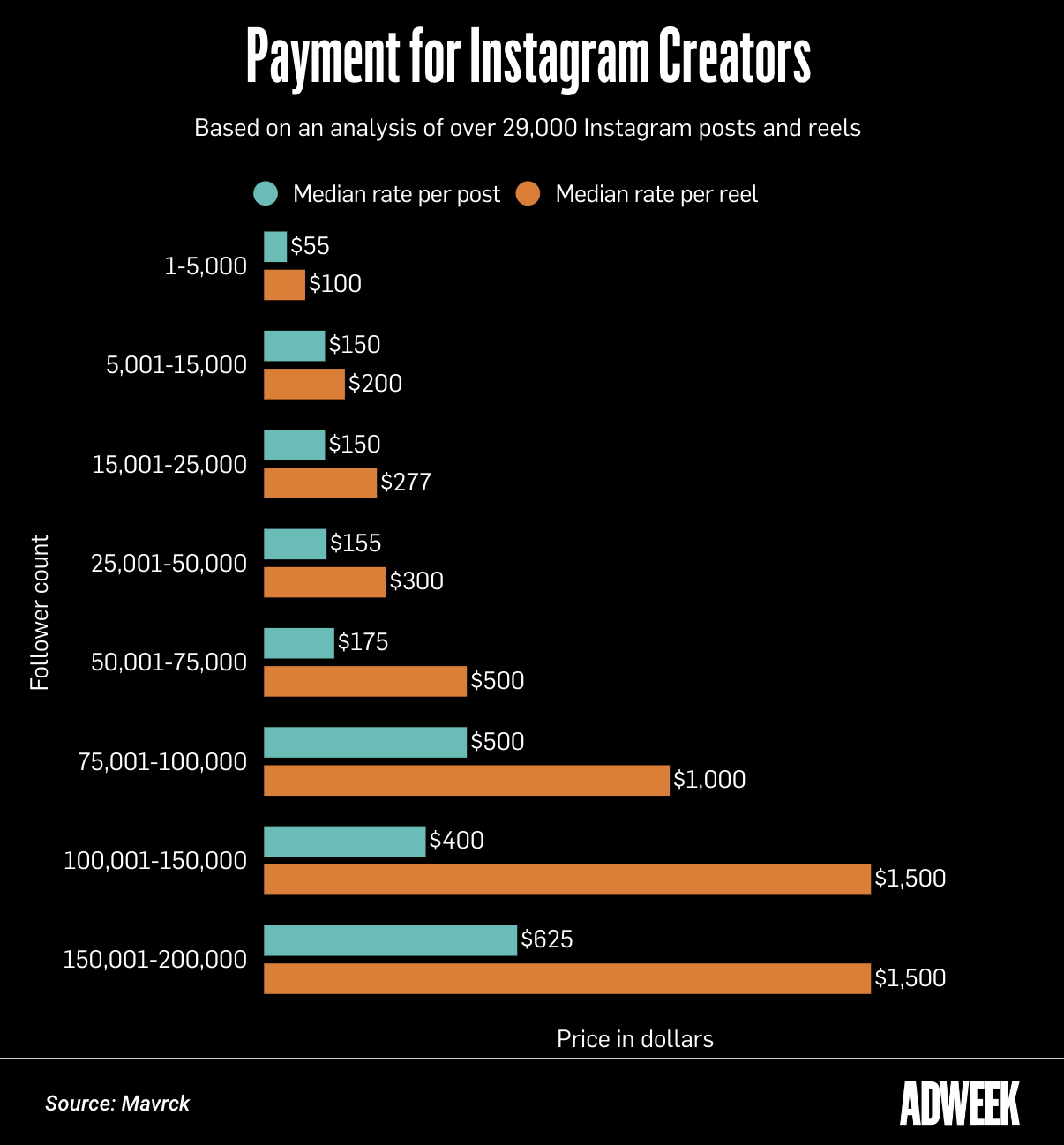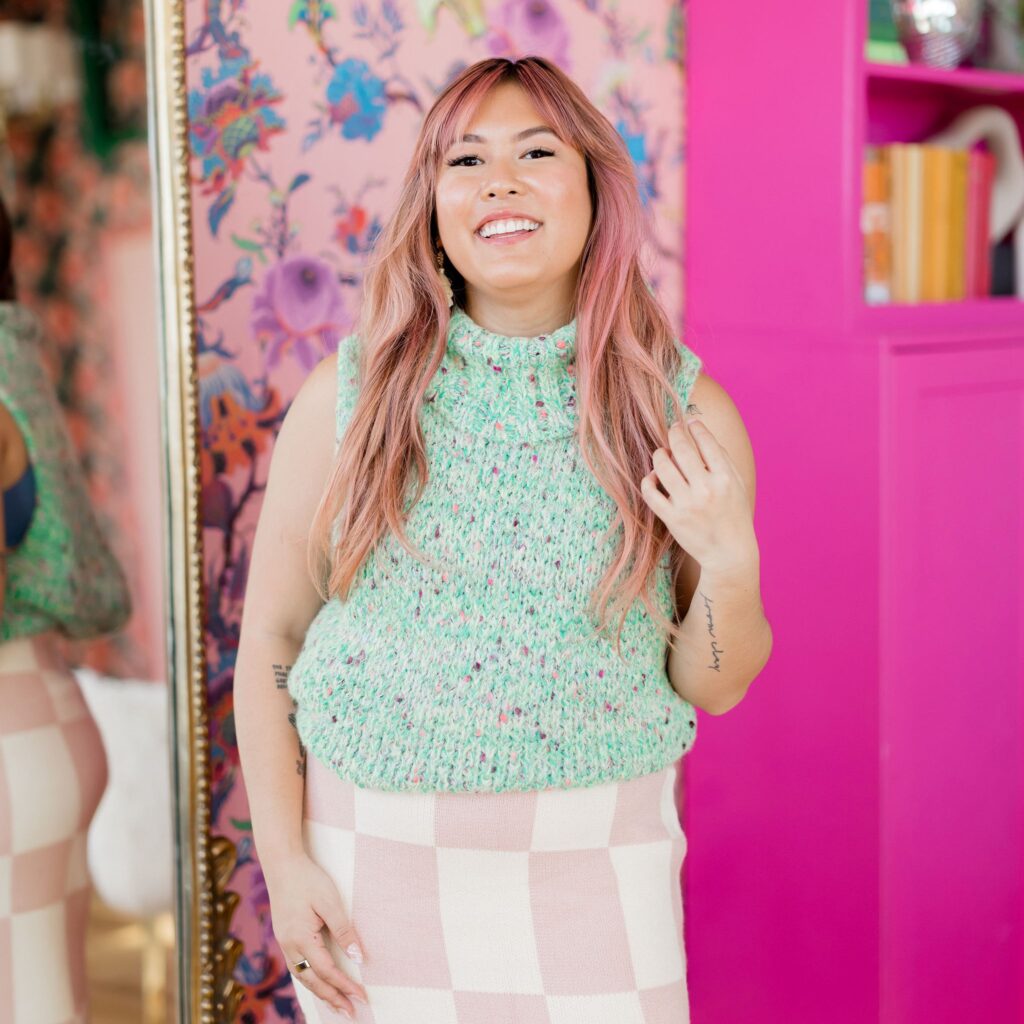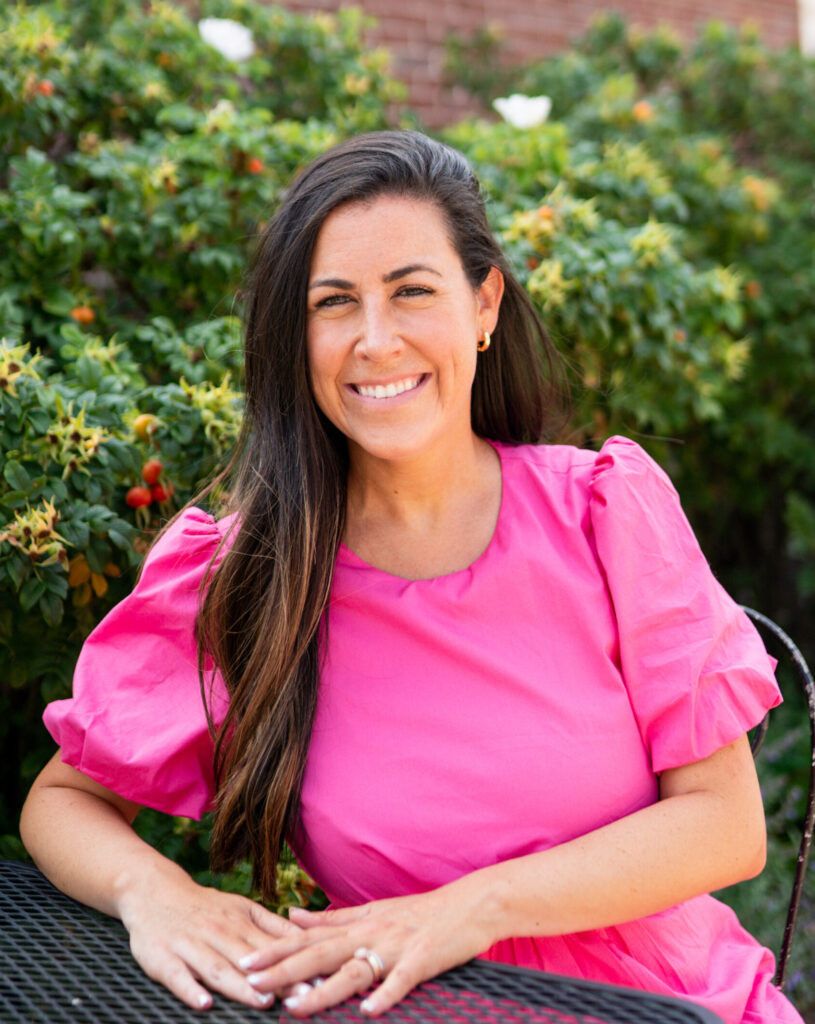Influencer marketing can prove to be beneficial and lucrative if it is done right. Any brand that is considering working with an influencer has a lot to consider before they launch their campaign, especially since a successful influencer marketing strategy isn’t guaranteed 100% of the time. Just like any other part of your marketing strategy, you will need to set reasonable expectations when partnering with an influencer or creator.
This month, we want to help you figure out how you can build an influencer strategy and what reasonable expectations may look like. With helpful input from industry experts Naomi Genota and Katie Stoller, we will give you the starting line to launch effective and realistic influencer strategy.
What is influencer marketing?
Influencer marketing uses the creation of branded content by, you guessed it, an influencer, to promote products, services, or help increase brand awareness. The goal varies depending on the campaign, but usually an influencer-brand partnership is focused on increased brand awareness or increased sales and conversions.
We do want to clarify that influencer marketing or creator marketing isn’t the same as UGC marketing. While both craft branded content to promote brands and their offerings, the difference is that a UGC creator doesn’t post that content to their own social media. Rather, they provide it to the brand as a product to be used.
In both of these cases, the creator and the brand enter into a partnership in which the creator is paid for the content they produce and/or the engagement it creates.
Make sure that, before you even reach out to an influencer, you understand what you expect the partnership to be.
The benefit of a good brand-influencer partnership
Influencer marketing, when approached the right way, can prove highly beneficial to both parties. That’s why many businesses are actually increasing their budget for it and why it is estimated to have a market size of $21.1 billion this year.
As highlighted in an article by Brandwatch, up to 51% of marketers say influencers help obtain more quality customers. What’s more, around 89% of companies attest to the fact that the return on investment for their influencer marketing is comparable to or better than other channels.
A well thought out influencer marketing strategy can provide your business with a good deal of increased exposure and better sales as a result.
We’ve seen prime examples of the success of influencer marketing in some of our own work. Take the Woodland Shrine campaign for example. This campaign was geared to help increase brand awareness and help with sales as the brand launched a new jewelry line in the United States. We reached out to and partnered with European artists who fit a similar niche that Woodland Shrine did. This brought over 350 new followers, more than 300,000 impressions, and up to three times more sales than in the previous month.
Key components of an impactful influencer marketing strategy
RM Creative Services offers influencer outreach as a part of our social media management services. For those trying to start the process on their own, we can help you start crafting crafting an influencer marketing strategy that gets your brand the attention it deserves?
This month, we have two industry experts offering added insights to help: Katie and Naomi.
Katie Stoller is an independent consultant to brands and influencers and is also the founder of Influencer Insider Guide. Naomi Genota is a content creator and influencer manager, working as the Influencer Talent Manager of Naohms Media and providing us with the perspective from both the brand and the influencer side of things.
With the help of these killer influencer marketing pros, we’re giving you the steps to build a strategy that rocks and tips to help you set expectations in a reasonable way.
Choose a campaign and set goals
First things first, you’ll need to figure out what you are looking to achieve. Do you want to improve your brand awareness and let people know more about what your business represents? Or are you trying to promote a new line of products that you are releasing? Figuring out what you want to accomplish and what the focus of the campaign is before you reach out to anyone is going to help you figure out what your goals are.
Identify your target audience(s) and the influencers they look to
Understanding who you want to market to is important for every part of your influencer strategy. This can be as broad as your brand’s full audience or it can be geared toward targeting one or two of your personas.
Focusing on your target audience early helps with successful marketing and identifying which influencers your audience already follows. This provides an ideal place to start figuring out who you may want to reach out to.
Katie advises looking to who your audience seeks information from to start. “These are going to be the influencers you will want to build relationships with,” she tells us. “It can start with a friendly email, it doesn’t have to be anything fancy. This whole industry is based around building relationships.”
Along with this, Katie also suggests that reaching out to influencers who are already fans of what you do is another effective way to start off.
“The dream brand deal is when the influencer has been a genuine fan of the brand for a long time and the brand has a general vision for the content,” Katie outlines. “When an influencer truly loves a product or service and shares their personal connection to that brand, we tend to see better performance, overall. There is nothing worse than an influencer posting about a brand they don’t love or have an air of indifference for–it is obvious and off putting.”
Figure out your budget and remember to be flexible
It is best to be realistic when setting a budget and sticking to it. You don’t want to throw an abundance of money at an influencer and expect it to turn into a huge success. However, you also don’t want to undercut the influencer because, as Katie puts it, “it is not going to garner the best content since the influencer will feel cheated.” That’s why it is important to figure out your budget and also discuss how flexible you can be with said budget before entering a conversation with your ideal influencer.

Naomi explains a bit more about figuring out how to set a budget for your influencer strategy. “If a brand is getting started with influencer marketing, I would recommend really evaluating first to see if they have a healthy enough marketing budget to hire a creator and pay them fairly,” she advises. “Account for the value of their endorsement, as well as the time and resources they will burn to produce marketing content for you. If it’s not enough and you prefer to have more chances to get reach and awareness, a better alternative could be to hire UGC creators to help produce content that can gain your account momentum and reach organically.”
Naomi continues, emphasizing that flexibility within budget is also extremely important. “The negotiation process should never be black and white,” she cautions. “This is why rates for partnerships are fluid numbers. A relationship has compromise, and this is where two entities work together to come to a conclusion that is beneficial on both sides.”
Flexibility and a reasonable budget aside, there are times when it is okay to walk away, as Naomi pointed out already. Katie also emphasizes the reality that sometimes things just don’t work out when it comes to a brand’s budget.
“My biggest soap box is that there are millions of brands and millions of influencers – if the money isn’t making sense, there’s always someone else to work with,” Katie points out. “Be realistic, be flexible and be transparent – but never settle for a price that makes you feel uncomfortable.”
Setting reasonable expectations for your campaign
Now that you have a basic outline of how to approach your strategy, let’s discuss setting expectations and measuring success.
Understand that what worked back then may not work the same now
Keep in mind that social media is always changing, which can impact the reach and effectiveness of some creator content. This has never been more apparent than in the shift that occurred after 2022.
Katie explains that many platforms have changed their algorithms to favor paid ads over organic content in some cases. However, different doesn’t translate to bad.
“It helps everyone to have more of a focus on data,” she says. “Influencers should double down on a specific niche or outcome they are good at and focus on that. And brands should only work with creators that make sense for them on multiple touchpoints, not just because they posted the product once.”
Know what Key Performance Indicators (KPIs) you need to focus on
Make sure to outline which KPIs you need to track before you launch your campaign. While not every campaign goal can be measured numerically, these stats can help you get a reasonable idea of whether or not your strategy is working. Here are a few KPIs you can track for each campaign goal:
- If you want better brand awareness→ Keep track of your website traffic, social mentions, and the quality of links tied to your site.
- If you are trying to build your audience→ Track your social media follower count and the number of opt-ins you get during the campaign.
- If you want better engagement→ This is the one time that vanity metrics actually count. Keep track of those likes, comments, and shares.
- If you want to increase your sales→ Keep tabs on qualified leads, new sales, and the overall ROI you garnered from the creator’s content (comparing how much you spent to how much the campaign made you overall).
If you are careful to keep track of qualitative results from you campaigns, you can plug them into this formula to see what kind of ROI you are getting: (Revenue earned/cost) × 100
Remember to consider where the content fits in your customer’s journey
Getting upset that a piece of content geared to help with brand awareness didn’t immediately translate into sales is a case of misplaced emotions. Match your expectations to what the content is meant to do and where it fits in the customer’s journey.

“Brands that understand the nature of a sales funnel and how it’s not up to the creator and influencer to generate them, sales and business are the best partners to work with,” Naomi tells us. “It allows the creator to step into what they do best, which is to get creative in producing the best content for them.”
The truth is that, if you know what you are looking for and have a good match in your influencer, letting them do what they do best and create is likely to yield you the best results. Don’t micromanage and don’t put impossible expectations on a creator – that will only ruin the partnership for the both of you.
Remember this partnership isn’t just supposed to help your business
Hiring an influencer doesn’t guarantee success. If people aren’t interested in what you have to offer, then a campaign still may not work. This could mean that it is time to evaluate the audience you are targeting.
It also highlights the fact that, truth be told, an influencer marketing strategy isn’t just meant to help your brand–the influencer should benefit from it too. And keeping this in mind is very important in the long run.
Naomi specifically looks to collaborate with brands that value a win-win partnership. In these collaborative instances, both the brand and the influencer operate best, achieving their goals without trying to negate the humanistic qualities that make influencer marketing what it is.
“If the brand values relationships more than just ‘getting the job done’ they want to build trust with the creator,” she explains. “This means that brands are negotiable, they look at the long-term investment, they are willing to pay for overall value and not just what’s in it for them.”
Incorporated into your larger social media strategy, a well-executed influencer marketing plan can help your business in more than one way. Plan ahead, be realistic with your budget, and keep your expectations reasonable. With these key points at the forefront of your mind, you are far more likely to create a brand-influencer partnership that you can build on for years to come.
Looking to add influencer marketing to your social media strategy? We offer influencer outreach as a part of our social media management services. If you are ready to build a social media strategy that partners with like-minded influencers and takes the internet by storm, now is the time to reach out.
“At the end of the day, it’s PR not the ER. Yes, brands put up a lot of money to run sponsored posts and yes, influencers are now doing branded work as their full time jobs, but we aren’t saving lives in the operating room. Social media is meant to be fun and educational, a vehicle to bring people together. Connection is everything.”

Contact RM Creative Services by sending a message to rachael@rmcsofficial.com or visiting our Contact page.
Written by Brianna Fries, a California-based writer, editor, bookworm, and mother of two. You can contact her at brianna@rmcsofficial.com and discover more of her work at brigibbsis.wordpress.com.
